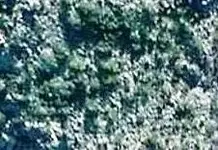Hal Croves
Silver Member
- #221
Thread Owner
Hal & Mike
As I recall, the old timers called Aylor's Arch the Eye of the Horse, or Caballo Oja. If you make it the eye on the horse of the Stone Maps, the head, neck and back of the horse can be roughly laid out on a topo.
Good luck,
Joe
Very interesting. I wonder when and why the name change from eagle's eye to horse's eye took place. I keep reading that Palomino Mountain is known as a "mystical" place but there is very little published to explain it. Standing in Aylor's Arch, looking east towards Black Top Mesa with a copy of each map may just be the next step.
Here is how I am seeing it.
The Upper Trail and Heart stone tells us were to go and what has been hidden.
It could be the location of 10 caches in 10 natural landmarks (caves, etc.)
Or it could be 10 x (TRIANGLE which is the symbol for 120 (degrees) which would be 1,200 (something) hidden in 10 "caves".
Is it 10 caches of 1,200 or one cache of 1,200,000 or using the stone map, 1,000,000.
If we had more information on the Broadway Cave treasure, we would be in a better position to take a guess.
Right now, IF the stones are authentic treasure maps, and IF this is the correct way to read them, then a hidden cache of gold & silver coin, perhaps belonging to the Mexican Army (military payroll) would make complete sense. If you were a Mexican loyalist in 1847, with a wagon load of gold coin and in the northern areas (Santa Fe, Tucson) during the American invasion, you would have essentially been trapped. Returning to occupied Mexico with a treasure was not an option. So, you hide it, and make a coded map so someone else could one day return to it. Of course this is just one possibility.
The Lower Trail stone (the profile line) would be what to look for once you have found the location. In this case, that could be Palomino Mountain.
Far less complicated than hot air balloons and aerial photographs.
Last edited:





 That because this area was used in a movie script,therefore no one ever took this area seriously,or considered it for solving a mystery except for the old timers.that is Ironic. talk about the ultimate superstition curse on treasure hunters. And just to think that when I was In school ,I was always accused of not paying attention.
That because this area was used in a movie script,therefore no one ever took this area seriously,or considered it for solving a mystery except for the old timers.that is Ironic. talk about the ultimate superstition curse on treasure hunters. And just to think that when I was In school ,I was always accused of not paying attention. you asked for more, here is something to consider,the sentence on the horse tablet that says "yo pasto al norte del rio", Is yo referring to the horse, or I, as a person, and is Rio referring to a actual river or the word Rio on the Horse map,and on the Heart stone there is a line with a "R"below it ,which matches the same area on the horse stone, Interesting way to really throw someone off the trail.looking for a river that does't exist.
you asked for more, here is something to consider,the sentence on the horse tablet that says "yo pasto al norte del rio", Is yo referring to the horse, or I, as a person, and is Rio referring to a actual river or the word Rio on the Horse map,and on the Heart stone there is a line with a "R"below it ,which matches the same area on the horse stone, Interesting way to really throw someone off the trail.looking for a river that does't exist.
